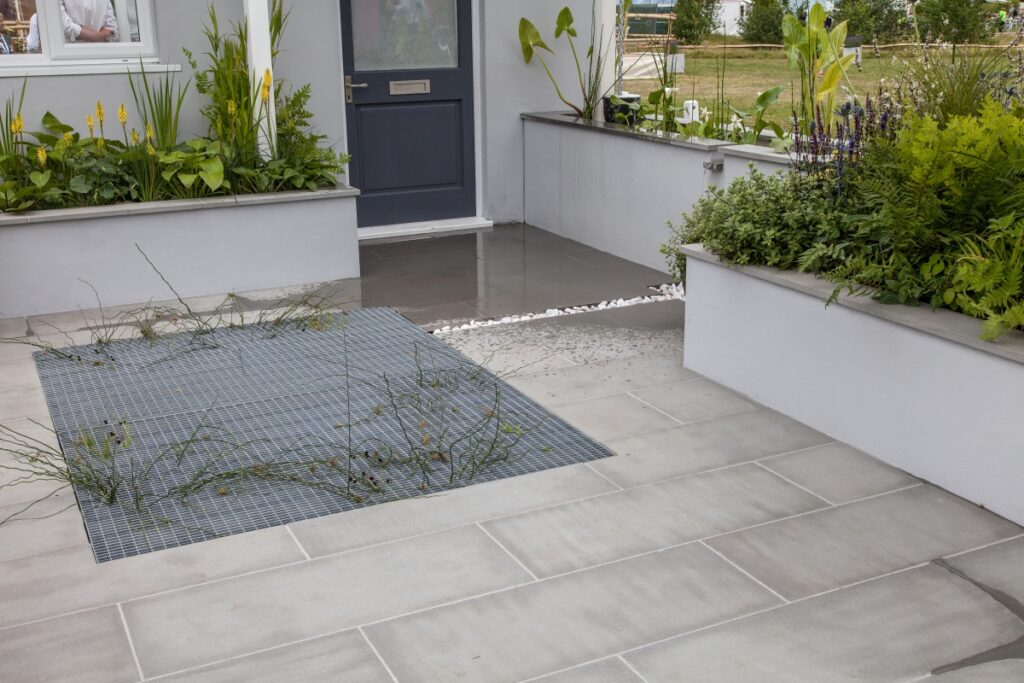What is Porcelain Tile?
Porcelain tile is a type of ceramic tile that is becoming increasingly popular in the world of interior design and home renovations. It is made primarily from a combination of finely ground clay and other natural materials that are then fired at extremely high temperatures to create a dense and durable material.
One of the key benefits of porcelain tile is its low water absorption rate. While traditional ceramic tiles can absorb anywhere from 5% to 10% of their weight in water, porcelain tiles have a much lower absorption rate of around 0.5% or less. This makes them the perfect choice for areas that are likely to get wet, such as bathrooms and kitchens.
Porcelain tiles come in a wide variety of colors, patterns, and textures, making them a versatile option for everything from backsplashes and countertops to flooring and walls. They can be glazed or unglazed, and can even be designed to mimic the look of natural stones such as marble or granite.
Another advantage of porcelain tile is its resistance to extreme temperatures. Unlike other flooring materials like concrete or wood, porcelain tile does not expand or contract based on temperature changes. This makes it a great choice for use in areas that experience extreme heat or cold, such as outdoor patios or heated flooring systems.
In terms of maintenance, porcelain tile is relatively easy to clean and can be effectively cleaned using just warm water and soap. It is also resistant to stains and scratches, making it a great option for high-traffic areas like entryways and hallways.
Overall, porcelain tile is a durable, versatile, and attractive option for anyone looking to update their home’s interior or exterior surfaces. Whether you’re looking to create an outdoor oasis on your patio or simply update your kitchen or bathroom tile, porcelain tile is definitely worth considering.
Benefits of Porcelain Tile for Outdoor Patio
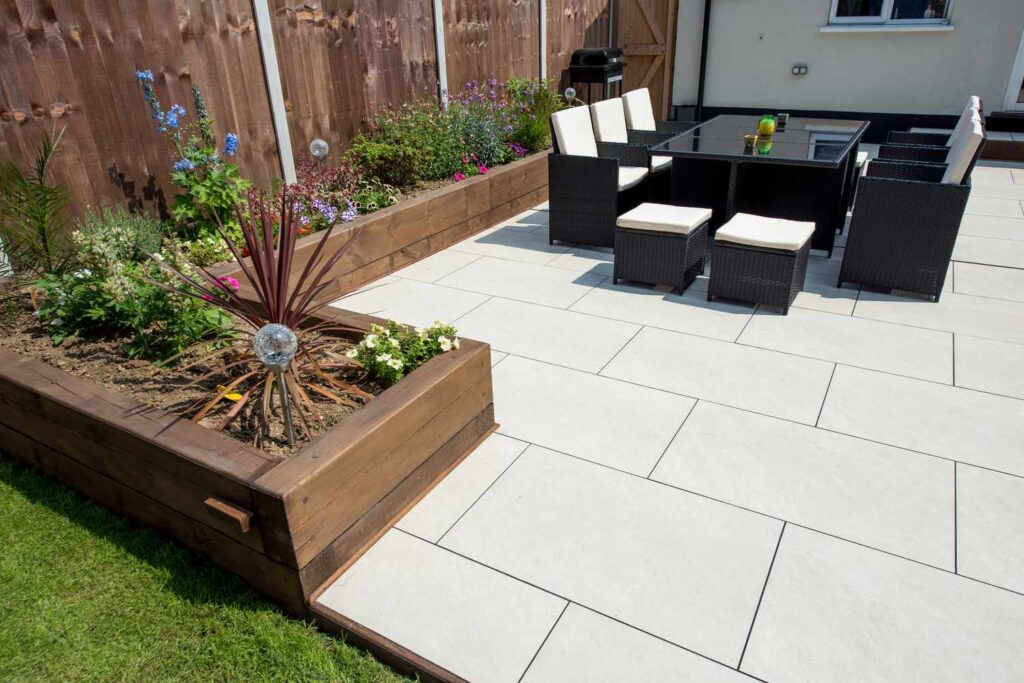
If you’re looking to create a beautiful and durable outdoor space, porcelain tile could be the perfect choice for your patio. Porcelain tiles offer many benefits that make them a popular choice for outdoor spaces, including their durability, versatility, and low maintenance requirements.
One of the key benefits of porcelain tile for outdoor patios is their resistance to water. Porcelain tiles have a very low water absorption rate, meaning they are less likely to crack or develop unsightly water stains over time. This makes them an ideal option for patios, pool decks, and other outdoor living spaces where moisture and splashing water is common.
Porcelain tile is also highly durable and can withstand heavy foot traffic, extreme temperatures, and harsh weather conditions. Unlike some other outdoor materials, like wood or concrete slabs, porcelain tile won’t warp or crack under the stress of extreme weather conditions like direct sunlight or freezing temperatures. This means your patio will stay looking great for years to come.
Another benefit of porcelain tile is the wide range of colors, textures, and patterns available. Whether you’re looking for a natural stone look, a modern geometric pattern, or something classic and simple, there’s a porcelain tile to fit your design needs. Plus, porcelain tiles can be installed with a textured surface to provide better traction on uneven surfaces, making them a safer option for outdoor areas.
Porcelain tile is also relatively easy to maintain. Unlike natural stone tiles that require periodic sealing and maintenance, porcelain tiles can be cleaned with a simple mixture of warm water and soap. They are also resistant to scratches and stains, making them a low-maintenance option that will retain their beautiful appearance for years to come.
Overall, the benefits of porcelain tile make it a great choice for creating a beautiful and functional outdoor patio that will stand the test of time. Whether you’re looking for a design-forward option or a practical, low-maintenance solution, porcelain tile is a versatile and durable choice that will exceed your expectations.
Water Absorption Rate
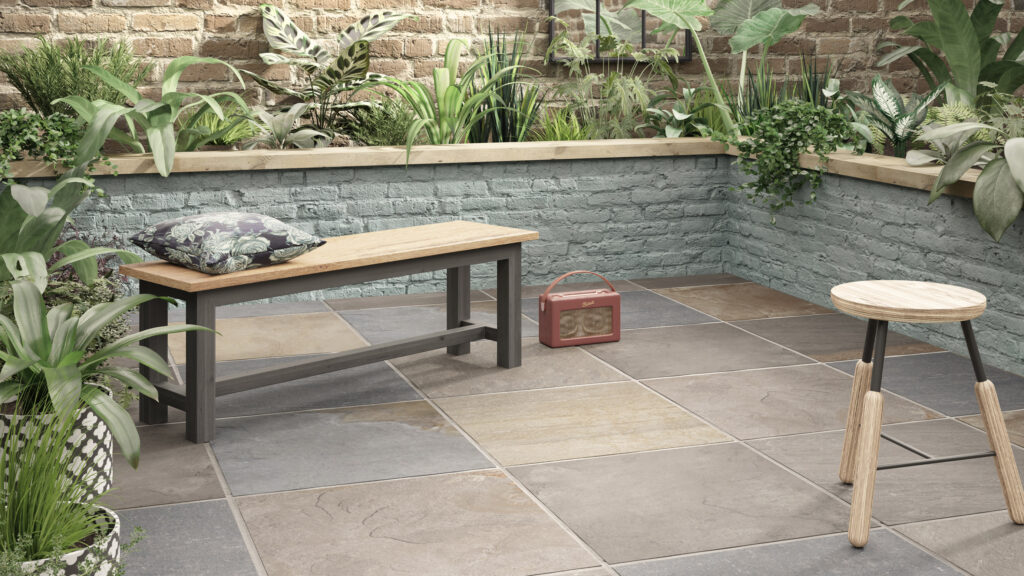
Water absorption rate is an important factor to consider when selecting tiles for outdoor applications. This refers to the amount of water that a tile is able to absorb. Tiles with a higher water absorption rate will absorb more water and may not be suitable for outdoor use, as they can crack or develop unsightly stains over time.
Porcelain tiles have a very low water absorption rate, typically less than 0.5%. This means they are suitable for outdoor use as they will not absorb much water and are less likely to develop issues. In contrast, other tile materials such as ceramic tiles may have a water absorption rate of more than 3%, making them less suitable for outdoor use.
It’s important to note that not all porcelain tiles have the same water absorption rate. Double-loaded porcelain tiles, for example, are porcelain tiles that have been pressed with an extra layer of porcelain on top. This makes them more durable and less likely to absorb water. However, they may also be more expensive than other types of porcelain tiles.
When selecting tiles for your outdoor space, it’s important to consider the water absorption rate, especially if your climate is wet or prone to rain. Always consult with a professional to ensure that you select the best tile for your specific project and avoid issues down the road.
Understanding the Water Absorption Rate of Porcelain Tile
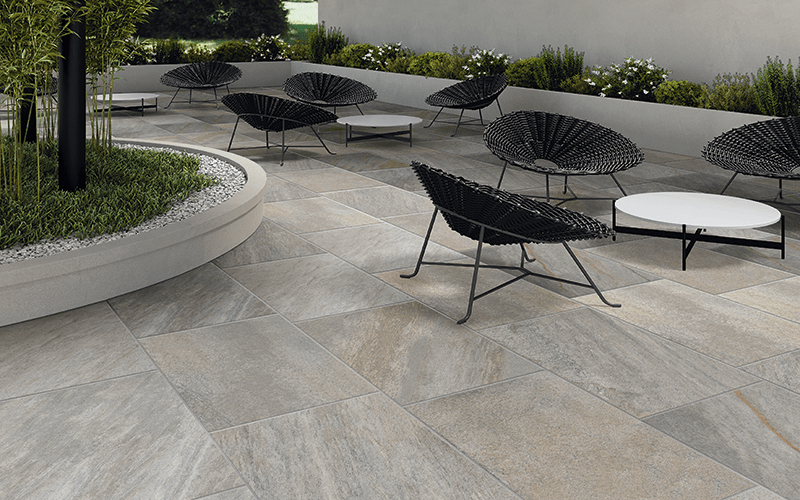
Porcelain tiles are a popular choice when it comes to flooring, whether it be for indoor or outdoor applications. They are known for their durability and resistance to moisture, which is why they are often used in areas with high foot traffic and exposure to water. One important factor to consider when choosing porcelain tile is the water absorption rate.
The water absorption rate of porcelain tile refers to the amount of water the tile can absorb after being submerged in water for a certain period of time. The lower the water absorption rate, the better the tile is for areas with exposure to water. Porcelain tiles with a water absorption rate of less than 0.5% are considered ideal for outdoor use, as they are less likely to develop issues such as cracking, staining, or freezing.
In contrast, ceramic tiles have a higher water absorption rate and may not be as suitable for outdoor applications. They may experience issues such as cracking or staining over time, especially in areas with freezing temperatures.
It’s important to note that not all porcelain tiles have the same water absorption rate. The water absorption rate can vary depending on the type of porcelain tile, the manufacturing process, and the quality of the tile. For example, double-loaded porcelain tiles have a higher density and are less porous, which makes them more resistant to water and other types of damage.
When choosing porcelain tile for your outdoor patio, it’s important to take into consideration the water absorption rate and other factors such as the type of tile, texture, and color. Some porcelain tiles may have a textured surface that provides more grip and reduces the risk of slipping in wet areas. Others may come in a variety of colors that can complement your outdoor space and add to its aesthetic appeal.
In order to maintain the quality of your porcelain tile and prevent issues such as staining or cracking, it’s important to clean it regularly with soapy water and warm water. Avoid using harsh chemicals or abrasive materials that may damage the tile surface.
In conclusion, understanding the water absorption rate of porcelain tile is essential when choosing the right type of tile for your outdoor patio. Consider the type of tile, texture, and color, and make sure to clean it regularly to maintain its quality and extend its lifespan. By taking these factors into consideration, you can create an outdoor oasis that is both beautiful and functional.
Why Does this Matter for Outdoor Applications?
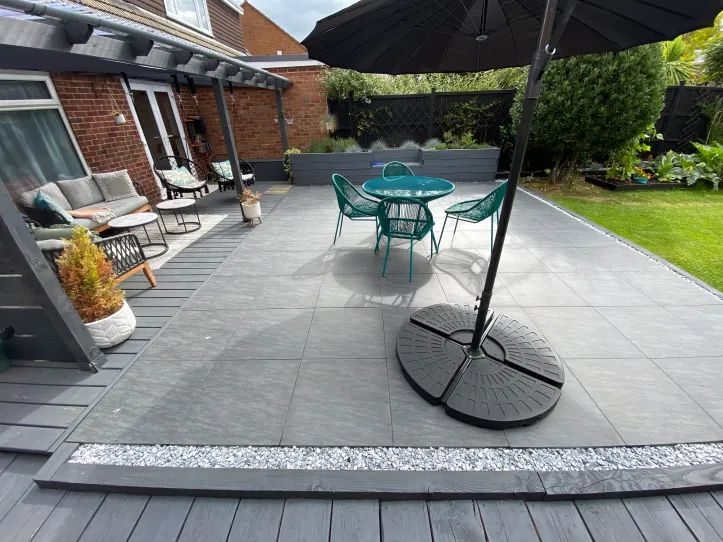
Porcelain tile’s low water absorption rate and durability make it an ideal choice for outdoor applications such as patios, pool decks, and outdoor living spaces. When exposed to direct sunlight, extreme temperatures, or gallons of water, outdoor materials can quickly deteriorate, crack, or fade. However, porcelain tile’s resistance to water and weather makes it the perfect choice for creating an outdoor oasis that can withstand harsh elements.
The texture and color of porcelain tiles also play a significant role in outdoor applications. Textured surfaces offer added grip, which makes porcelain tiles a safer option for wet areas such as pool decks and outdoor showers. The variety of colors available also makes it easy to complement or match the style of any outdoor space.
Porcelain tile’s resistance to staining and cracking makes it low maintenance, which is a crucial factor for outdoor flooring. Regular cleaning with soapy water and warm water is enough to maintain porcelain tiles’ quality without the need for harsh chemicals or abrasive materials that may damage the tile surface.
Overall, the water absorption rate and durability of porcelain tiles make them a better option than ceramic tiles or natural stones for outdoor applications. The wide variety of colors, textures, and types of porcelain tiles available makes it easy to find a style that complements any outdoor space while ensuring that the flooring will last for years to come.
Tips on How to Select the Right Tile with Low Water Absorption Rate
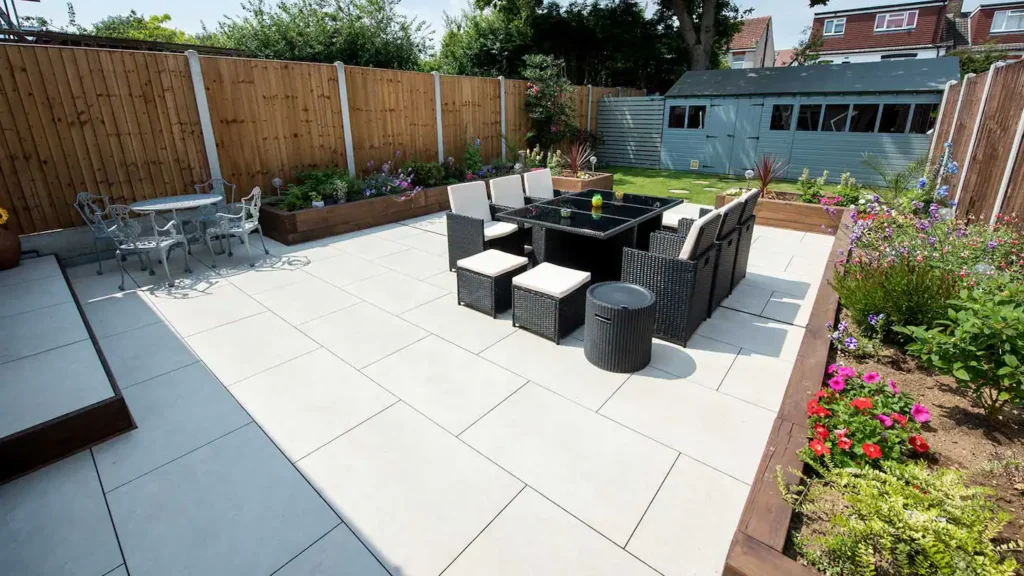
If you’re looking to install tile in a wet or outdoor area, it’s essential to choose a tile type with a low water absorption rate. Water absorption rate is the amount of water that a tile can absorb compared to its weight, and it’s a critical factor in ensuring a tile’s durability in damp or wet areas. Here are some tips to help you select the right tile with a low water absorption rate for your next flooring project:
1. Look for porcelain or ceramic tiles: Porcelain and ceramic tiles are known for their low water absorption rates compared to other tile types. Porcelain tiles are particularly dense and durable, making them an excellent choice for areas that get a lot of moisture or foot traffic.
2. Check the tile’s water absorption rate: Most tile manufacturers list the water absorption rate on their packaging or websites. Be sure to check this information and select tiles with a rate of 0.5% or less for outdoor or wet areas. Lower water absorption rates mean that the tile will be less likely to crack or warp over time due to water damage.
3. Consider textured tiles: Textured tiles can help provide traction and prevent slips in wet areas like patios or pool decks. Some textured tiles have a higher water absorption rate than smooth tiles, but it’s essential to strike a balance between safety and water resistance.
4. Choose darker colored tiles: Darker tiles tend to have a lower water absorption rate than lighter-colored tiles. This is because darker pigments are denser and less porous, making them less prone to water damage.
5. Avoid unglazed tiles: Unglazed tiles have a higher water absorption rate than glazed tiles, making them more prone to water damage. They’re also more challenging to clean and maintain than glazed tiles, so it’s best to avoid them in wet or outdoor areas.
In summary, selecting a tile with a low water absorption rate is crucial to ensure the longevity and durability of your flooring. Be sure to consider factors such as tile type, water absorption rate, texture, color, and glazed vs. unglazed surfaces when selecting the right tile for your project. With these tips in mind, you’ll have a beautiful and durable flooring option for your wet or outdoor area.
Durability & Strength
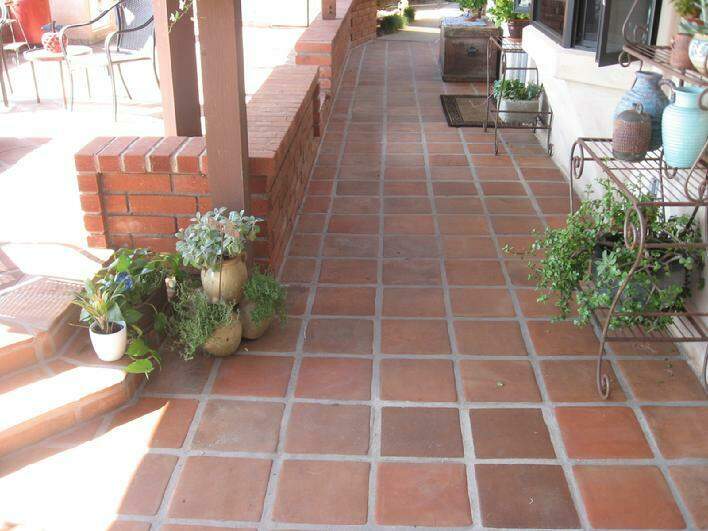
When it comes to tiling your outdoor patio or any outdoor space, durability and strength are essential factors to consider. Luckily, porcelain tiles are known for their durability and ability to withstand the elements, making them a perfect choice for outdoor applications.
Porcelain tiles are made by firing clay and other materials at high temperatures, making them incredibly hard and durable. Because they’re so dense, they’re less porous and less susceptible to damage from water, sunlight, and extreme temperatures.
Unlike natural stone tiles, which can be delicate and prone to cracking, porcelain tiles are nearly indestructible. They’re perfect for high-traffic areas like pool decks, patios, and other outdoor living spaces. Their strength also enables them to support heavy outdoor furniture and withstand the weight of foot traffic without cracking or breaking.
Another benefit of porcelain tiles is their resistance to staining. The tiles can resist staining from spills and outdoor sources, including dirt, leaves, and other debris. This makes them easy to clean and maintain, and it ensures that they will maintain their beautiful appearance for years to come.
Porcelain tiles come in a variety of colors, textures, and finishes, so you can find the perfect fit for your outdoor space. And because they are so durable, they offer a long lifespan and are an excellent investment for your home.
In conclusion, when considering outdoor tile options, porcelain tiles are an excellent choice for their durability, strength, and ability to withstand extreme temperatures, water damage, and staining. They offer a viable alternative to natural stone tiles and other outdoor materials, and their long lifespan and ease of maintenance make them an excellent investment for any outdoor space.
How Durable and Strong is Porcelain Tile?

Porcelain tile is an incredibly durable and strong material, making it a popular choice for home and business owners alike. It’s made by firing clay and other materials at high temperatures, creating a dense and hard surface that is less porous than other types of tile. This strength is what makes porcelain tile so resistant to damage from water, sunlight, and extreme temperatures.
When it comes to outdoor spaces, porcelain tile is an excellent option for areas like patios, pool decks, and other high-traffic areas. Its durability and strength allow it to withstand heavy foot traffic, as well as the weight of outdoor furniture, without cracking or breaking.
One of the main benefits of porcelain tile is its resistance to staining. Due to its non-porous nature, it’s able to resist spills and stains from sources such as dirt, leaves, and other debris. This makes it easy to clean and maintain, ensuring that its appearance will remain beautiful for years to come.
Porcelain tile also comes in a wide variety of colors, textures, and finishes, allowing homeowners to select the perfect fit for their outdoor space. From warm earthy tones to vibrant and bright colors, porcelain tile offers endless options to suit any style and design preference.
In addition to its strength and durability, porcelain tile is also a safe choice for outdoor spaces. Its surface is slip-resistant, providing a secure footing for anyone walking or lounging on the surface.
Overall, the durability and strength of porcelain tile make it an excellent investment for any outdoor space. Its long lifespan, resistance to damage and staining, and endless design options make it a smart and attractive choice for any home or business owner looking to enhance their outdoor oasis.
Does Porcelain Tile Stand Up to Direct Sunlight?
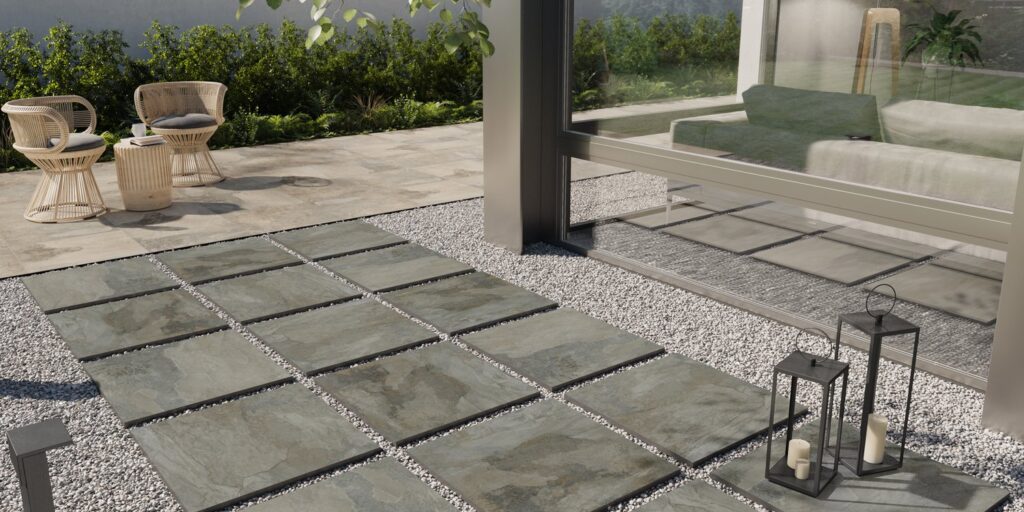
Porcelain tile has long been a popular flooring option for both indoor and outdoor spaces. Its durability, resistance to staining, and wide variety of colors and finishes make it a versatile choice for any area in the home. However, one question that many homeowners may have is whether or not porcelain tile can stand up to direct sunlight.
The answer to this question is yes, porcelain tile can withstand direct sunlight without fading or discoloration. Porcelain tile is made from a mixture of clays, feldspar, and other minerals that are then fired at high temperatures, creating a dense and durable material. This manufacturing process also makes porcelain tile resistant to UV rays, ensuring that its color and finish remain vibrant and beautiful even with prolonged exposure to direct sunlight.
However, it’s important to note that while porcelain tile is resistant to UV rays, it can still get hot to the touch when in direct sunlight. This can be a concern for outdoor areas like patios or pool decks, where bare feet may come into contact with the surface. It’s important to choose a lighter color tile or one with a textured surface to help reduce the heat absorption.
Another consideration when it comes to outdoor porcelain tile and direct sunlight is how it is installed and maintained. It’s important to follow the manufacturer’s recommendations for installation and use the correct adhesive and grout to ensure the tile stays in place and remains strong, even under direct sunlight. Regular cleaning with soapy water will help keep the porcelain tile looking its best and prevent any buildup of dirt or debris that could lead to discoloration or staining.
In summary, porcelain tile is an excellent choice for outdoor spaces and can stand up to direct sunlight without fading or discoloration. Just be sure to choose lighter colors or textured surfaces to reduce heat absorption and follow proper installation and maintenance procedures to ensure the tile stays strong and beautiful for years to come.
Can You Get Different Sizes, Shapes, and Textures in Porcelain Tile?
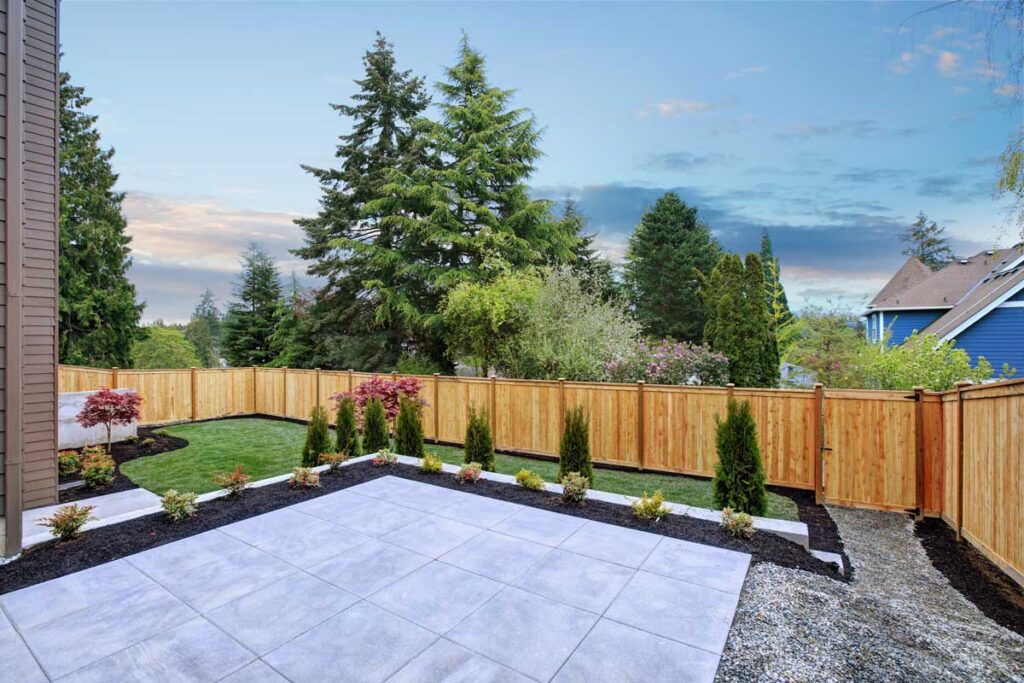
Porcelain tile is a popular choice for its durability, versatility, and aesthetic appeal. One of the advantages of porcelain tile is the wide variety of sizes, shapes, and textures available on the market. Whether you’re looking for a traditional square shape, a contemporary hexagonal style, or something in between, you can find a porcelain tile that suits your needs and preferences.
Several factors influence the size and shape of porcelain tiles available on the market. One of the most important is manufacturing technology. Modern advanced manufacturing technologies allow for the production of porcelain tiles of different sizes and shapes. Today, you can find porcelain tiles as small as 1×1 inch to as large as 5×10 feet. The size of the tile can impact the overall design of a room, and it’s essential to understand the size of the tile before purchasing it.
Another factor that can impact the look and feel of a porcelain tile is its texture. Porcelain tiles come in a range of finishes, including polished, unpolished, matte, and textured. The surface texture of a porcelain tile can impact its appearance, durability, and slip resistance. A polished surface adds a reflective and smooth finish, but it can be slippery when wet. An unpolished finish, on the other hand, is matte and provides more excellent slip-resistance.
Porcelain tiles can be textured by brushing, sandblasting, or carving, giving them a unique, tactile quality. Textured porcelain tiles come in various options, from subtle and smooth to rough and prominent. Textured porcelain tiles can give a room depth and dimension and are ideal for high-traffic areas like hallways, kitchens, and bathrooms.
Finally, shape is another essential feature of porcelain tiles. You can find porcelain tiles shaped like hexagons, triangles, diamonds, and circles. These geometric tiles provide a contemporary and elegant look that transforms the appearance of a floor or wall with their shapes. A non-standard tile shape can provide a focal point for a room or be used to create a pattern or texture.
In conclusion, porcelain tiles come in different sizes, shapes, and textures, making them a versatile and popular option for homeowners and designers. Porcelain tile’s durability, low maintenance, and aesthetic appeal have made them a popular choice for a wide range of applications from flooring to walls. With so many options on the market, it’s essential to take your time and explore all the possibilities when selecting a porcelain tile for your project.
Variety of Colors & Designs Available

When it comes to outdoor patio flooring, porcelain tiles have become increasingly popular due to their durability, water resistance, and low maintenance. But what sets porcelain tiles apart are the variety of colors and designs available on the market.
Porcelain tiles come in an array of shades, textures, and patterns, making it easy for homeowners to find the perfect match for their outdoor living space. The color options range from classic neutrals like beige, cream, and white to bold hues like teal, navy, and red. There are even porcelain tiles that imitate natural stones like limestone or marble.
But it’s not just about the color. Porcelain tiles can also be designed with unique patterns and textures. Some popular designs include floral motifs, geometrical shapes, and wood grains. There are options for every taste, whether you prefer a modern, minimalist look or a more traditional, intricate design.
In addition to the variety of colors and designs available, porcelain tiles are also versatile in their placement. They can be used as pool deck flooring, patio flooring, or even in outdoor kitchens. With their water and slip-resistant properties, porcelain tiles can endure heavy foot traffic and direct sunlight while maintaining their visual appeal.
Overall, the variety of colors and designs available in porcelain tiles makes it an excellent choice for any outdoor space. Homeowners can easily find the perfect match for their style and design preferences while enjoying the durability and low maintenance of porcelain tiles.
What Kinds of Colors, Patterns, and Textures are Available in Porcelain Tile?
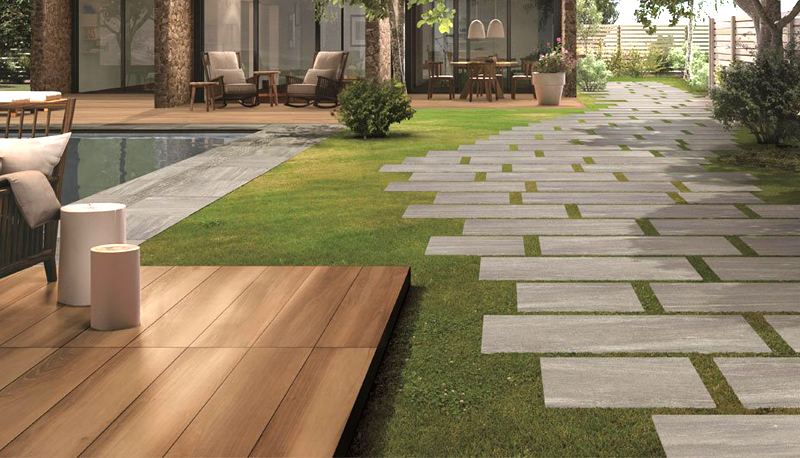
Porcelain tiles have become a popular choice for homeowners who want to create an elegant and durable flooring option for their residences. With their wide variety of color options, patterns, and textures, porcelain tiles can be used to bring a unique and stylish look to any room in a home, whether it’s indoor or outdoor spaces.
When choosing porcelain tiles, one can choose from an array of different colors. These colors range from neutral tones like white, gray, or beige to bold and vibrant colors like red, blue, or green. One can easily create a timeless look with neutral colors, while bold tones can add a pop of color in a subtle way.
Porcelain tiles also come in a variety of patterns. These patterns can range from simple and subtle to more detailed and intricate designs. Some popular pattern choices include floral motifs, geometric shapes, and wood grains. For homeowners who want a more natural look, porcelain tiles can even be designed to mimic the appearance of natural stones like granite or marble.
Textures are another essential element when it comes to porcelain tiles. Porcelain tiles are available in various textures, such as matte, polished, or even textured. Polished tiles are shiny and give off a modern feel, while matte tiles offer a more subtle and natural appearance. Textured tiles are great for areas where slip resistance is important, such as pool decks or outdoor patios.
The beauty of porcelain tiles is that they can be designed to suit any style, taste, or space. Tiles with bright colors, intricate patterns, and unique textures are perfect for creating a bold statement in any room, while earthy tones and natural designs offer a more subdued and calming environment.
In summary, porcelain tiles offer a vast array of color, pattern, and texture options to choose from. These tiles are versatile and fit various applications, whether it’s for indoor or outdoor spaces. When selecting the perfect porcelain tiles, it’s essential to consider the color, pattern, and texture to ensure that the final result suits one’s personality and style preferences.
Are There Any Unique Styles or Specialty Tiles That Can be Used for an Outdoor Patio?
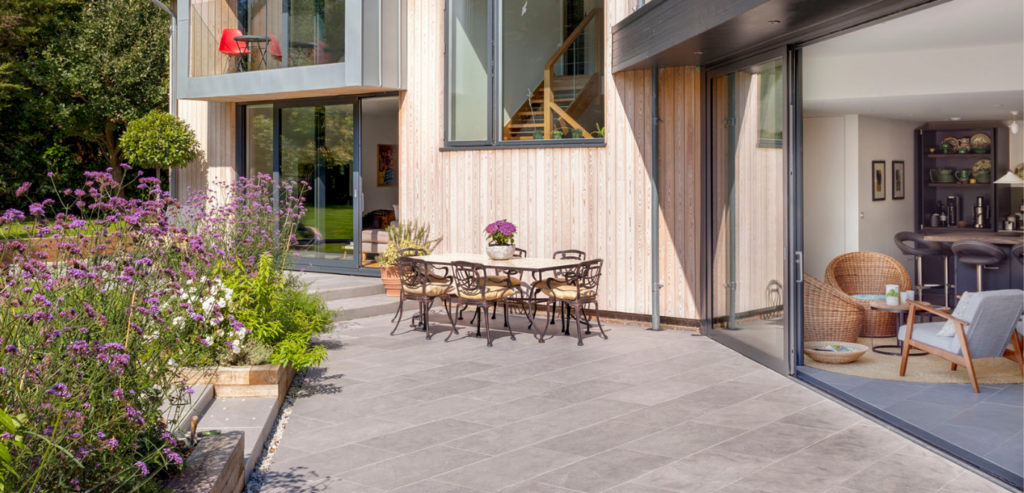
Are you looking for a way to spruce up your outdoor patio and make it more inviting and exciting? Consider exploring the world of specialty tiles! While traditional porcelain tiles can certainly do the job, there are many other unique styles and types of tiles to consider as well.
One popular option for outdoor patios are mosaic tiles. These small, colorful tiles can be arranged in intricate patterns and designs that add a beautiful touch of artistry to any space. Mosaic tiles are particularly well-suited for accent walls or decorative features, and they can easily be coordinated with other tile styles to create a cohesive look.
For a more rustic and natural feel, consider using quarry tiles. These durable and sturdy tiles are made from natural clay and offer a textured surface that adds character and charm to any outdoor space. Quarry tiles are also great for uneven surfaces, as they can be installed with a slight slope to ensure proper drainage.
If you’re looking for a tile that can stand up to extreme temperatures and harsh weather conditions, porcelain pavers might be the way to go. These thick and sturdy tiles are specifically designed for outdoor use, making them the perfect choice for patios, pool decks, and other outdoor living spaces. Porcelain pavers come in a wide range of colors and can even be designed to mimic the look of natural stone.
Another unique option to consider are soapstone tiles. These tiles are naturally stain-resistant and feature a warm, matte finish that exudes a cozy atmosphere. Soapstone tiles can add a touch of luxury to outdoor patios and are particularly well-suited for fire pits or outdoor kitchens.
No matter what type of tile you choose for your outdoor patio, be sure to take into account factors like water absorption rate, resistance to direct sunlight, and ease of cleaning. With the right tile choice, you can create an outdoor oasis that perfectly suits your style and needs.
Installation Considerations
As you prepare to install porcelain tile on your outdoor patio, there are several important considerations to keep in mind. From choosing the right materials to properly preparing the space, installation plays a key role in the longevity and durability of your outdoor tile project.
The first step in any tile installation process is to choose the right type of tile for your project. Porcelain tiles are an excellent choice for outdoor patios due to their resistance to water, extreme temperatures, and direct sunlight. Additionally, porcelain tiles come in a wide variety of colors and textures, allowing you to customize the look and feel of your outdoor space.
Once you have chosen the right type of tile, it’s important to properly prepare the surface on which you will be installing the tile. For outdoor patios, this might mean clearing away any vegetation, debris, or other obstructions that could interfere with the tile installation process. You’ll also want to ensure that the substrate is even and level, and that there is proper drainage to prevent water damage over time.
In addition to preparing the surface, you’ll also want to consider the pattern and layout of your porcelain tile installation. This includes determining the size and shape of the individual tiles, as well as the spacing and placement of the tiles within the overall pattern. Proper layout can help to create a cohesive and attractive look for your outdoor patio, while also ensuring that the tiles are properly supported and spaced for maximum durability.
Finally, it’s important to properly seal and grout the porcelain tiles once they are installed. Sealant helps to protect the tiles from water damage and stains, while grout provides a strong and secure bond between the individual tiles. Additionally, grout helps to fill in any gaps between the tiles, creating a seamless and cohesive look for your outdoor patio.
With these installation considerations in mind, you can create a durable and beautiful outdoor patio that will provide years of enjoyment and use. Whether you opt for porcelain pavers, mosaic tiles, or a combination of different materials, careful planning and attention to detail can help to ensure a successful and long-lasting tile installation project.
What are the Steps Involved in Installing a Porcelain Tile Floor on an Outdoor Patio?
Porcelain tile is an excellent choice for outdoor patio flooring due to its durability and resistance to moisture and extreme temperatures. However, installing a porcelain tile floor requires careful planning and attention to detail. Here are the key steps involved in installing a porcelain tile floor on an outdoor patio:
1. Preparation: The first step is to prepare the surface on which the tile will be installed. This may involve removing any existing flooring material, such as old tiles, concrete, or wood. The surface should be clean, level, and free of any debris, oil, or grease. If necessary, you may need to use a leveling compound to even out any uneven spots.
2. Layout: Once the surface is prepared, you need to plan the layout of your tiles. This involves determining the size and shape of the individual tiles and the pattern in which they will be laid. You should also measure the area to be tiled to determine the quantity of tiles needed. It’s a good idea to lay out the tiles on the floor in the pattern you’ve chosen to ensure that you’re happy with the look before proceeding.
3. Cutting: Porcelain tiles can be cut with a tile cutter or a wet saw. Be sure to wear protective gear such as safety glasses and gloves, and follow the manufacturer’s instructions carefully.
4. Adhesive: Once you have your tiles cut and laid out, it’s time to apply adhesive to the surface. A suitable adhesive for porcelain tile should be used, and it should be applied evenly with a notched trowel. Work in small sections so that you can lay the tiles before the adhesive dries.
5. Tile Installation: Place the tiles carefully on the adhesive with a slight twisting motion to ensure they are properly seated and level. Use plastic spacers to maintain a consistent gap between each tile. Once all the full-size tiles are laid, leave the adhesive to dry as per the manufacturer’s instructions.
6. Grouting: Use a rubber float to spread the grout over the surface, making sure to work it well into the gaps between the tiles. Once the grout has been applied, use a damp sponge to wipe away any excess and smooth the joints. After the grout has dried, apply a sealer to protect the tiles and grout from moisture and stains.
7. Finishing touches: Finally, add any finishing touches such as trim, edging, or decorative accents to complete the look of your outdoor patio floor.
By following these steps, you can ensure that your porcelain tile floor is installed correctly and will provide a long-lasting and attractive surface for your outdoor patio.

